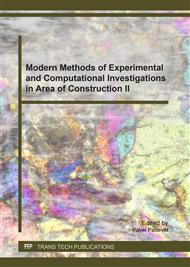p.65
p.70
p.76
p.81
p.88
p.97
p.102
p.109
p.115
Microfiber Angle and its Effect on Wood Cell Behavior
Abstract:
The article continues the previous one “Coefficients of Transverse Contraction of the Wood Cell Constituents and their Effect on the Cell Behavior”. Wood, as being one of the most commonly used building materials, disposes of complex structure and basic building unit of a wood-cell. Each individual cell is composed of four distinct cell wall layers - the Primary, S1, S2, and S3. This work focuses on a closer examination of the relationship between microscopic and mechanical properties of wood. The main task was an effect of micro fibril angle (MFA) in the S2 layer of a wood on the cell wall parameters. This layer occupies more than 80% of the total thickness of the cell wall and thus has the greatest influence on the mechanical properties of wood cells. MFA values as well as values of bulk density has a strong dependence on the modulus of, elasticity in the longitudinal direction, as well as on the values of shrinkage. We tried to describe the dependence of the longitudinal modulus of elasticity on its. The proposed formula was partially validated using nanoindentation experiments performed in Norway spruce cell walls with highly variable cellulose microfibril angle and lignin content [5].
Info:
Periodical:
Pages:
88-93
Citation:
Online since:
March 2017
Authors:
Keywords:
Price:
Сopyright:
© 2017 Trans Tech Publications Ltd. All Rights Reserved
Share:
Citation:


